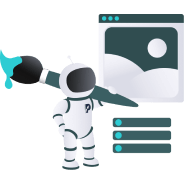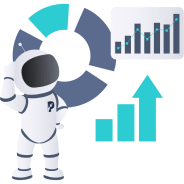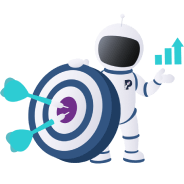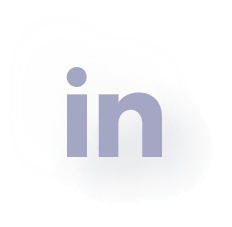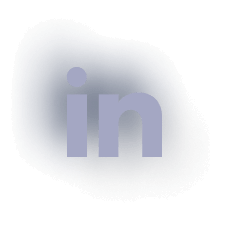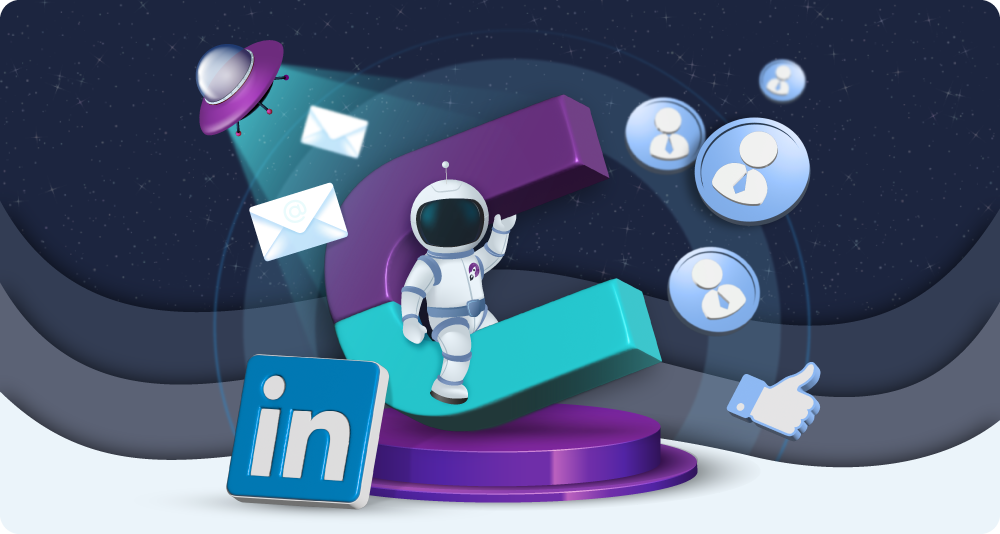

7 Lead Magnet Ideas to Use on LinkedIn
Key Takeaways
-
Lead magnets aren’t one-size-fits-all. You should choose the ones that align best with your abilities and audience.
-
Even the best lead magnets are soured by a misguided approach. Keep relevancy in mind; you don’t want to annoy your connections by being too intense or persistent.
-
Effective lead magnets offer real value. Consider what it is your business can realistically offer and focus on that.
LinkedIn is more than just a place to network. It’s a powerful platform for growing your email subscriber list, sparking conversations, nurturing your reputation as an expert, and building real business relationships. But to make the most of it, you need the right bait.
That’s where lead magnets come in. These are valuable resources you offer in exchange for someone’s contact details or engagement. From downloadable templates and interactive quizzes to exclusive content and industry insights, the options are endless.
In this blog, we’re not just listing lead magnets, we’re giving them personalities. You’ll meet seven different types of lead magnets, each with its own style, strengths, and way of capturing attention. You might resonate with one personality, such as The Educator or The Giver, or you might use a combination of a few.
We’ll show you how these lead magnets can be promoted through LinkedIn posts, messages, and even in the comments section. Whether you’re educating, engaging, or nurturing potential clients, there’s a lead magnet personality waiting to do the heavy lifting for you. Let’s meet them:
7 LinkedIn Lead Magnet Personalities
Before we jump into the different types of lead magnets, there are a few things to keep in mind. As you read, think about:
- What feels natural for your brand’s tone and goals?
- Which formats are you most equipped to create quickly?
- What’s going to resonate most with your ideal audience?
Let’s take a closer look.
1. The Educator: sharing educational resources
The Educator lead magnet is all about giving something truly useful to your audience. This personality positions your business as an authority; you’re presenting yourself as someone
who knows their stuff and isn’t afraid to share it. The value here is in clarity, insight, and generosity.
Sharing educational lead magnets is a strong approach because it builds trust quickly by demonstrating expertise, and it’s also great for long-term lead nurturing, particularly in B2B and service-based industries. Educational content can also be repurposed and reused over time, making it evergreen.
Audiences that respond best to educational lead magnets are curious and research-driven. They’re aware of the problems they have and are keen to find solutions. However, they want to see your expertise first and learn from you before buying from you.
The Educator personality is likely to work best for you if you work in software, finance, HR, marketing, or are some sort of training provider.
Examples of educational lead magnets:
- Whitepapers
- Reports and case studies
- Cheat sheets
- Guides
- Courses
To best present your educational lead magnets into engaging LinkedIn posts, you might want to turn the key takeaways into snappy carousels or Thought Leadership posts. Data snippets or infographics could be shared, alongside a CTA for users to download your full resource. Educational content can also be appropriately shared in the comments section, especially if you’ve had a back-and-forth with another commenter already about the topic you specialise in.
2. The Engager: offering interactive resources
The Engager personality thrives on interaction, using tools that encourage participation and real-time connection. It’s perfect for building rapport and gathering insights into your audience while offering real value in return.
Engagement lead magnets work because they create a sense of community and involvement. They’re great for gaining real-time feedback, as this can shape your future offerings. Audiences can connect with you before committing to a formal sales touchpoint, allowing trust to build.
Engagement lead magnets are attractive to people who want to learn something, similar to educational magnets. In addition, they might like asking questions or engaging in real-time discussions. If you’re a coach or consultant, these types of magnets are likely to work well for you as your operations rely on connection.
Other businesses that benefit include B2B service providers, SaaS (as these will need to demonstrate or teach audiences about their products), content creators, thought leaders, or brands that want to build community.
Engagement lead magnets include the following:
- Webinars
- Masterclasses
- LinkedIn Live Q&As
- Interactive quizzes
- Polls and surveys
These can be executed very well with a combination of anticipation, sneak peeks, and relevant targeting. For example, you could use countdown posts and reminders leading up to a webinar or live event, share teaser questions from a quiz or a preview of poll results, or create carousel slides to outline what participants will learn or get.
When reaching out through LinkedIn messages or comments, make sure you only invite highly relevant connections. If you’re going to jump into a thread or take up space in someone’s inbox, you don’t want to be a nuisance.
3. The Connector: providing networking opportunities
The Connector thrives on bringing people together. Lead magnets of this kind work to give access to conversations, communities, and exclusive spaces. These magnets are attractive because they position your brand as a trusted hub within your niche. That creates long-term engagement beyond single downloadable assets, as users feel a sense of loyalty to the community to which they belong.
Connector magnets are unique in that they encourage peer-to-peer conversation, not just brand-to-customer. This appeals to those wanting to learn, grow, and connect with others like them. Your ideal audience may be looking for insider access or to grow their professional circle. You’ll be able to cater to that if you’re an agency or consultancy with community-based offerings, an event organiser, or even an industry thought leader.
Networking lead magnets may include:
- Exclusive LinkedIn groups, communities, or events
- Invitation-only roundtables
- Niche Slack or Discord channels
- Regular industry networking events
- Free tickets to conferences or summits
- Access to webinar recordings
These sorts of offerings are highly attractive to the right audiences. However, the way you deliver them is definitely important. While it’s recommended to use FOMO strategically (i.e., stating there are limited and exclusive spots), you should also give users a sneak peek (e.g., behind-the-scenes photos or comments from previous attendees) to give them enough to be enticed by.
Networking magnets are pretty apt for LinkedIn messages. Sending something like: “I’ve curated a private community of [job title/professionals] — would you like an invite?” would definitely be an exciting message to receive, as long as it’s relevant. For the comments section, offer an invite if your specialist topic comes up – e.g., “We’re chatting about this in our next roundtable — I’ll DM you a spot if you’re interested!”
If bringing people together does it for you, you might be a Connector type.
4. The Demonstrator: offering templates and resources
The Demonstrator is all about proof and practicality. This lead magnet personality gives your audience a shortcut, e.g., ready-made tools, templates, and real-life examples they can use or learn from immediately. It’s less about theory and more about “here’s exactly how I did it — and how you can too.”
Demonstrative lead magnets work well because they’re instantly valuable and actionable. They build authority, as they show you’ve ‘been there, done that’. These sorts of magnets also tend to be easy to repurpose, and they attract leads who are closer to conversion. These leads are typically strapped for time and seeking easy solutions.
You might be a Demonstrator if you work in marketing, sales, operations, B2B services, or SaaS, or if you’re a ‘solopreneur’. Example lead magnets include:
- Social media calendars
- Content strategy frameworks
- Project management templates
- Free calculators and tools
- Budget and planning templates
- Case studies and testimonials
Promoting these sorts of lead magnets is pretty easy as it’s a quick process for users. They don’t have to wait for an event or webinar to start, and they can immediately engage with your offering once it’s sent to them. You’ll have to give some sort of sneak peek without giving it all away, so perhaps include messaging like “Save yourself 5+ hours with this free resource” to convey value.
With outreach via messages or comments, it’s best if you can notice their need for something. E.g., “Since you’re posting regularly, our content calendar might be useful for planning ahead” or if someone is asking how to do something, “Happy to share the exact template we use — I can DM it to you!”
Once again, there’s a balance to achieve in which you’re not hassling uninterested users. Furthermore, your other LinkedIn content should showcase your success; this will provide a trustworthy backdrop to justify users investing in your offerings.
5. The Analyst: sharing industry insights
The Analyst is the one with a finger on the pulse. This lead magnet personality builds authority by sharing evidence, not opinions. They offer the kind of insights that help decision-makers steer their ship with confidence. These lead magnets show you know the landscape, and that your audience can trust you to help navigate it.
These sorts of magnets include:
- Trend forecasts
- Industry benchmarks
- Infographics
- Competitive analysis reports
- User behaviour or analytics studies
These lead magnets are effective because they position you as a thought leader and attract high-intent leads who need to make informed decisions. They also encourage sharing, save others doing their own research, and are reusable down the line.
Your ideal audience may include senior stakeholders, decision-makers, analysts, consultants, and even prospects comparing platforms or vendors. If your business operates in a fast-moving industry or is in a research-heavy space, this is likely to be a profitable venture for you.
Analytical lead magnets are best promoted with charts that show snippets of data, as they tease your audience with the insights they’ll gain. You may choose to use your magnets as a conversation starter e.g., “Do these numbers surprise you?” or “How do your results compare?”
And yet again, when promoting your lead magnets through messages or comments, you must be mindful of relevance. Only share findings or offer your magnet if someone has posted about challenges you’ve researched, or if it’s utterly clear from their profile that they’d be interested.
6. The Giver: offering free consultations or audits
The Giver offers their time, energy, and expertise up front — not to sell, but to serve.
This lead magnet personality is all about creating personalised micro-experiences that build trust fast. Whether it’s a quick audit, a short consultation, or a profile review, The Giver says, “Let me show you how I can help for free.”
These sorts of lead magnets create strong foundations that can cultivate trust and future collaboration. They’re easy for you to personalise to fit your audience’s pain points and for starting low-pressure conversations that lead somewhere lucrative.
If you’re a freelancer looking to build client relationships, a business that customises solutions to each customer, or you provide a consultancy service, these sorts of lead magnets are exactly what can draw in your ideal audience. Those users will be curious, almost ready to take action, looking for a second opinion, and value hands-on guidance.
It may be that you can offer:
- Strategy audits
- Website and social media assessments
- Free consultations
- LinkedIn profile reviews
When promoting your magnet, you may want to position it as a limited-time offer to increase urgency. Simultaneously, you want to convey the low pressure of a free audit, and no strings attached (as long as you can get their email address). Users are also more likely to engage with your offer if they’ve shared a pain point publicly, so scour the relevant threads to find your people.
7. The Insider: providing special offers and discounts
The Insider knows how to make people feel special. This lead magnet personality is all about exclusivity. You’ll be offering discounts, early access, and premium content that’s only available through LinkedIn. This will suit businesses such as course or content creators, coaches, consultants, businesses testing new products or pricing tiers, and e-commerce or SaaS brands offering time-limited deals.
These lead magnets foster a sense of being part of something exclusive, which is why they encourage fast action from users. They’ll feel valued and prioritised, which is great if you’re launching a new product or content series.
The best audience for these types of magnets are loyal followers who already like what you do, curious prospects waiting for the right moment to buy, and people who love feeling like they’ve got a special deal. These lead magnets include:
- LinkedIn-only discounts or promos
- Early bird signups
- Limited-time promotions for connections only
- Gated blogs or videos
- Exclusive newsletters
As with any sort of time-limited offer, you’ll want to create a sense of urgency when promoting your magnet. Announcements should be paired with eye-catching visuals and, of course, a clear outline of your USP.
You can build intrigue and share your offering in both messages or the comments section, always bearing relevancy in mind.
Final thoughts
There’s no single “correct” way to generate leads on LinkedIn — just the one that suits you best. Whether you’re The Educator sharing in-depth resources, The Giver offering a helping hand, or The Insider rewarding loyal followers, your lead magnet should reflect your strengths and the needs of your audience.
As you start planning, ask yourself:
- What kind of content do I enjoy creating?
- What does my ideal client genuinely find useful?
- How can I offer real value without overcomplicating it?
Remember, success on LinkedIn isn’t just about what you offer, but how you share it. You should be clear about the value you’re offering, make your CTAs easy to follow, and show up on the platform consistently and with purpose.
For further assistance with your social media marketing, reach out to us here at purpleplanet. We offer a whole suite of digital solutions:



